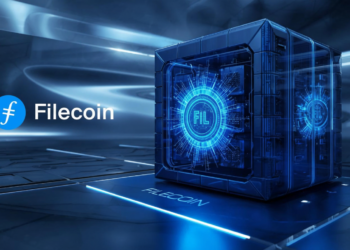Data breaches affect millions every year, with over 1 billion records exposed in 2022 alone. Current digital identity systems are largely centralized and susceptible to hacks, leaving users vulnerable and powerless. Web3 provides a new approach that focuses on decentralization, security, and user control. This shift promises a more trustworthy digital identity framework, essential in today’s increasingly digital society.
Understanding Web3’s Decentralized Identity (DID)
What is Decentralized Identity?
Decentralized Identity (DID) allows users to own and control their identities. Key principles include:
- User Control: Individuals retain authority over their personal data.
- Portability: Move identities freely across different platforms.
- Interoperability: Work seamlessly with various services.
In contrast, centralized systems store identities in one place, making them vulnerable to security breaches and misuse.
How DID Works: The Technology Behind It
Blockchain technology underpins Decentralized Identity. It secures and verifies identities, using a distributed ledger to reduce risks. Cryptographic techniques ensure that personal information is encrypted, making unauthorized access nearly impossible.
Benefits of DID: Enhanced Security and Privacy
DIDs offer significant advantages over traditional systems, such as:
- Improved Data Security: Decentralized architecture minimizes risks tied to central servers.
- Enhanced Privacy: Users control their own data, choosing who can access it.
The Challenges of Current Digital Identity Systems
Centralized Control and Vulnerability
Centralized systems can be hacked, exposing sensitive information on a large scale. In 2021, over 4,000 data breaches occurred in various industries, showcasing the weaknesses in these models.
Lack of User Control and Portability
Managing multiple online identities can be a real hassle. Users often struggle with a lack of portability across platforms, forcing them to start from scratch when switching services.
Identity Theft and Fraud: A Growing Problem
Identity theft cases impact millions, costing individuals and businesses billions. In 2022, losses from identity fraud reached $52 billion, while criminal techniques for stealing identities continue to evolve.
Web3 Solutions for a Secure Digital Identity
Self-Sovereign Identity (SSI) and its Applications
Self-Sovereign Identity (SSI) means users have complete ownership over their data. Key features include:
- User Empowerment: Individuals control their information and decide who sees it.
- Real-World Applications: Projects like the Sovrin Network are leading the way in real-world SSI implementation.
Decentralized Identifiers (DIDs) and Verifiable Credentials (VCs)
DIDs work alongside Verifiable Credentials (VCs) to provide a cohesive identity verification system. Businesses can use DIDs and VCs to authenticate users easily, improving security and trust.
Blockchain-Based Identity Management Platforms
Blockchain provides a framework for securely managing digital identities. Existing platforms like Civic and U-Port demonstrate how blockchain can streamline the identity verification process.
Real-World Applications and Use Cases of Web3 Identity
Enhancing Online Security and Privacy
Web3 identity systems improve security for users significantly. In finance, projects like DeFi platforms leverage DIDs to authenticate user identities, providing a safer experience.
Streamlining Online Processes and Reducing Friction
Web3 identity simplifies the authentication process, reducing the hassle for users. For instance, e-commerce sites can use DIDs to speed up sign-ups and checkout processes.
Fostering Trust and Transparency in the Digital World
Web3 identity promotes trust between users and businesses. By using verifiable credentials, users can feel confident that their information is secure, helping to combat fraud and misinformation.
The Future of Web3 Identity and Its Impact
Scalability and Interoperability Challenges
Scaling Web3 identity systems presents challenges, particularly regarding user access and handling larger volumes of data. Greater interoperability is vital for users to transition between platforms effortlessly.
Regulatory Landscape and Adoption
Understanding regulatory measures becomes crucial as Web3 identity grows. Harmonizing laws across industries will foster wider adoption, ensuring user rights and privacy are maintained.
The Role of Web3 Identity in the Metaverse and Beyond
Web3 identity holds potential in the metaverse, enabling users to maintain their identities across virtual environments. A decentralized identity system will shape how individuals interact in these spaces.
Conclusion: Embracing the Decentralized Future of Identity
Web3 identity offers profound benefits: enhanced security, improved privacy, and full user control. This decentralized approach is set to reshape digital identity, creating a safer, more trustworthy online experience. Explore the power of Web3 identity and discover how it can transform your digital interactions.

























